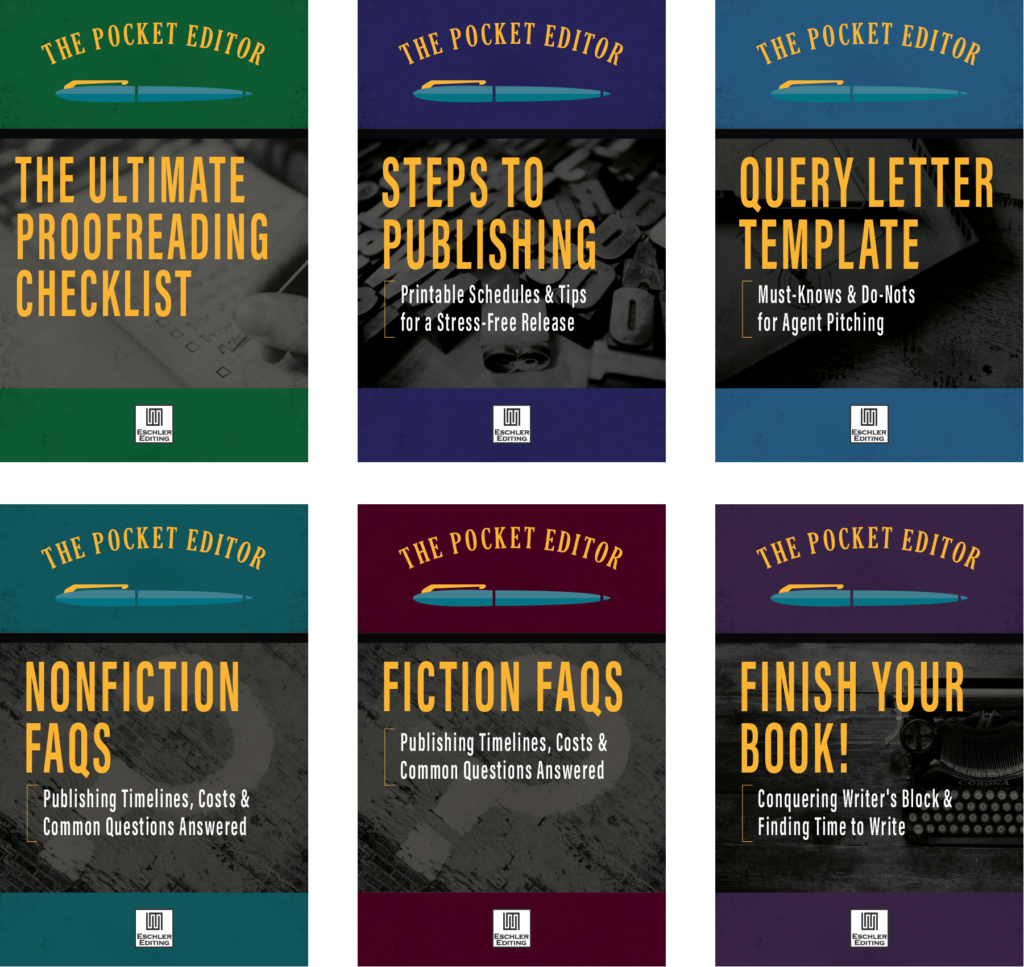by Emilee Newman Bowles
with Angela Eschler, Adrianne Montoya, and Lindsay Flanagan
Have you ever thought about time travel? What if we said it’s possible—well, sort of. We don’t have a DeLorean, and we’re not sure falling through Stonehenge can take you back in time, but we do have a pretty awesome literary device to suggest: the nonlinear timeline. This device allows you to travel back and forth in time and thus develop a character or storyline in alternative ways, emphasizing certain parts of the story and forcing readers to look at a situation from a different perspective.
Most stories progress along a linear timeline—one written in the order of when the events take place: event A, midpoint B, conclusion C. One reason for this common approach is that it allows you to show cause-and-effect most easily. But if you have a particularly challenging narrative, character, or event to offer readers, you may want to use nonlinear timelines—you guessed it, story events written out of chronological order: opening the book with conclusion Z, but then flashing back to event Y, and skipping over to points E, F, and G, for example (though the order isn’t relevant here).
So why would you want to write your story out of chronological order? Well, take into consideration this (debated) scientific theory: time isn’t linear, although our perception of it is. (Like in the hit movie Arrival.) So why not use this philosophy to justify time travel and alter the reader’s perception of your story? Maybe you need to develop some mystery in a story that isn’t naturally mysterious. Or maybe you have the challenging task of helping the reader empathize with a character who does something rather terrible; it’s a pretty difficult task to build an empathetic character and then have them “betray” the reader by making a horrific choice. These strategies can help a reader more directly experience what dementia is like, or amnesia, or certain types of mental illness. Perhaps your book is more literary and you want to find an original way of telling your tale or you need to pull off a bit more of a suspension of disbelief in your magical realism. Or you could be dealing with a tragedy that requires delicate plotting. These types of stories greatly benefit from nonlinear timelines in creating the emotional effect you want in the reader.
The Purpose of a Nonlinear Timeline
Nonlinear timelines always have a purpose: to increase the drama in a story that may be emotional but wouldn’t be a page turner if told the traditional way, to build tension and suspense by keeping readers on their toes, to emphasize a story’s theme, to flesh out the plot or develop a character in a unique way, or to stagger pacing so it has the best effect on the story’s overall momentum. These timelines often allow for a great surprise ending, either leading to an exciting reader aha or moving readers to awe or tears. These timelines can also offer the reader a thematic or conceptual bait and switch—forcing readers to face their prejudices/biases without warning and thus reconsider their assumptions about the world or the stereotypes they buy into.
Here’s a quick example: Think of Tony Morrison’s Beloved. Since the reader doesn’t know Sethe’s past when the strange corporeal ghost Beloved comes on the scene, we don’t understand Sethe’s conflicted emotions. This builds a mystery and also sets us up for a shocking discovery. The nonlinear narrative unfolds in such a way that we’re able to confront the theme of beneficent infanticide, along with other horrors of war and slavery, with sympathy and grace; if told in any other way, we would only be horrified by the acts on the page, finding it impossible to empathize with the characters.
Cautions
Please note, though, that the worst thing you can do with a nonlinear timeline is to use it incorrectly to make your book appear artsy or literary. You need to know the right time in a story to use the devices below and whether employing them is even right for your particular story at all.
The Short List of Nonlinear Devices
There are many ways you can write a nonlinear timeline. Here are a few writers use most:
Flashbacks
The most obvious and most-used way to step out of the timeline, a flashback looks at an event from the past that explains or enhances something happening in the present timeline of the story. One of the benefits of using flashbacks is that you are able to start your story on or near the story’s inciting incident rather than trying to cram in backstory. Flashbacks would only include glimpses of backstory that raise the stakes or add information that helps readers understand a character.
In Harry Potter and the Order of the Phoenix, J. K. Rowling uses a flashback through the use of her nifty magical see-into-the-past bowl, the Pensieve. When Harry Potter looks into the Pensieve and sees his father bullying his arch rival, Severus Snape, this raises the stakes and creates even more conflict for Harry: How can he keep hating Snape when he sees how his father treated him? It also helps the reader understand why Snape hates Harry so much. J. K. Rowling didn’t introduce this information in the Sorcerer’s Stone, where we first meet Snape—she added it four books later! And doing so helps build Snape’s character in intriguing ways, helping with the back-and-forth conflict readers face of whether to trust Snape. In the end, he is one of the bravest and noblest of characters despite his petty jealousies and meanness. The high point at which we discover this is built on Rowling’s judicious use of glimpses into Snape’s past.
A big key to the successful flashback is to make sure it’s done in a flash. No long, drawn-out, explanatory info dumps!
Parallel Timelines
When a scene or storyline is set in an earlier time, it doesn’t necessarily mean it’s a flashback; one use of the past is with the parallel timeline. The parallel timeline is used when there are two plots—plot A as something that happened in the past, and plot B, which is what the current story and the current problem is about. Plot A serves as secondary timeline that supplies information to help resolve plot B.
In Stephen King’s The Green Mile, there are two timelines—the contemporary timeline of the elderly Paul Edgecombe, who while living in a nursing home tells a fellow resident of his time as a prison guard at Cold Mountain Penitentiary. The past timeline tells of Paul Edgecombe the prison guard, who spent time at the penitentiary overseeing death-row inmates. During his time, he gets to know an unusual inmate, John Coffey, who is quiet, empathetic—and has healing powers. Paul himself is healed of an infection. Although Paul learns that John is innocent of the crimes he’s been accused of, he doesn’t have the time to prove it before John is executed; John dies willingly because he says he is tired of the pain and sadness around him. When the parallel timelines converge, we see that Paul has lived an extraordinarily long life due to the fact that John has transferred some of his powers to Paul when he cures him of an infection. Paul is 104 years old in the present timeline, and he too is now tired of all the pain and sadness he has seen and felt (and caused) over the course of his life.
A big key to writing successful parallel timelines is to make sure the past is directly related to the present and impacts the story’s resolution, as well as the main character’s reconciliation.
Flash-Forwards
Less common is the flash-forward, where expected or imagined events from the future are inserted in the current timeline. A flash-forward can be used to reveal something about a character’s motives. If you use this device, make sure readers are still willing to continue the journey toward that future event with your character. Perhaps the best-known flash-forward in literature is in A Christmas Carol by Charles Dickens, where Ebenezer Scrooge is shown what the remainder of his life will be—and even how his death will be viewed by others—if he doesn’t change his ways. Because we know Scrooge’s future is so grim, it adds tension to the current timeline: Will he change for the better and alter his fate, or will he refuse to believe the things he has been shown?
Effect and Cause
No, that wasn’t a mistake. You must first show your readers the effect of an event, then go back and reveal the cause. In linear stories, much of the tension is built toward what effect will result from all of the causes: Frodo volunteers to take the Ring to Mordor at great risk to his own well-being but for the benefit of Middle-earth; Katniss is a self-imposed Tribute who must fight to the death or be killed. In a nonlinear, effect-and-cause narrative, our primary orientation to Frodo might be as a Hobbit already on his journey, suffering persistent pain from the stab wound he sustained at Weathertop. Or we would identify Katniss as a survivor in the thick of a dangerous rebellion, battling past her post-traumatic nightmares from her time as Tribute. The events that got them here would be included in the narrative to inform character or theme in exactly the order the author wants the reader to experience them and not necessarily in linear time.
In the classic novella A River Runs Through It, narrator Norman Maclean opens the story with telling the reader the effect (his grieving for and remembering his brother) before the cause (Paul’s death). But his grief is so profound we want to go back and meet Paul for ourselves, even though we know it ends up in loss: “I often thought of him as a boy, but I never could treat him that way. He was never ‘my kid brother.’ He was a master of an art. He did not want any big brother advice or money or help, and, in the end, I could not help him.” This type of nonlinear timeline is often used to create a hook: The world has ended, the lover is dead, the good guy loses. The reader then simply has to know how this all came about.
Another example is Jeffrey Eugenides’ Middlesex, where narrator Cal uses the first page to reveal and discuss his specific genetic oddity, the one that’s led to him being raised as a girl despite being genetically and chromosomally male. Cal immediately disarms the juicy punch line, thus freeing himself and the reader to explore themes of gender identity, familial and cultural quirks, and the immigrant experience as he shares episodes from his family life. We can laugh in conspiratorial hindsight because our narrator has already told us how all these threads come together.
As with the other techniques listed above, this one can be used at any time in the story; it doesn’t have to be just at the opening of the book. And it doesn’t just have to serve as a hook. You can use it several times within a book to lead the reader down one path and then employ the bait and switch, throwing them off and building a sense of mystery (an unreliable narrator may be a good pairing with this technique). For example, a chapter could start with certain information (the effect) that gives us “x” perspective, but then later we are disabused of that view by another reveal relevant to the actual cause of the effect we experienced earlier; this causal information makes us reevaluate what we perceived about the characters and situations they faced. Gotcha!
Employing Several Techniques Simultaneously
For the truly daring, you can aggressively tackle the nonlinear timeline without fully grounding the story around a clear foundational chronology. Often this type of storytelling is more artistic and literary, but it must be well done and tied together with common themes or “clues” that help the reader connect the dots. These types of stories usually polarize readers—they are fun “mind trips” for some while making other readers/viewers frustrated to the point of anger.
Some examples of timeline mind trips we recommend:
- The movie Memento is about a revenge-happy protagonist who has short-term memory loss. In order to solve the murder of his wife, he must tattoo clues on his body each day so he can start tracking the evidence a little faster each day; he also uses Polaroid photos as a way to track information he can’t remember. We jump backward in his life day after day, so his story moves completely backward in time, while the goal of the movie—to solve the murder—moves forward with a ticking clock. The forward-moving timeline is shown in black and white while the backward-moving story is shown in color—a cinematographic technique used to mimic the protagonist’s mind. The “reveal” is a shocking twist, thanks to nonlinear timeline techniques.
- Other great examples of timeline fun are found in the book Cloud Atlas, which uses multiple points of view from different periods of history.
- Writing icon Toni Morrison uses nonlinear timelines in several of her books.
- And Mama Day, by Gloria Naylor, is another fun read that jumps around in time, place, and viewpoint, as well as duplicating the same scenes from multiple viewpoints.
- Consider the popular book The Time Traveler’s Wife.
- Rewatch the aforementioned film Arrival.
- To go deeper in your study, you can see an analysis of nonlinear timeline in the well-reviewed Cold Quiet Country here.
- And, lastly, check out the Writing Excuses podcast (season 12, episode 49) for more fun examples and other ideas on how to use non-linear timelines.
We recommend reading many stories that use the above devices in order to get a sense for the breadth and depth of their potential and how to properly handle them.
Tips to Remember
- Use visual cues to let readers know when you’re deviating from the linear timeline. Page dividers, headlines, and having the flashback set in italics or in a different format (journal entry, poetry, email/social-media style or a clearly different character voice) are a few ways writers signal a change to readers.
- You can use objects in the story to tell your reader they’re headed to a different time. A character looking at a photograph or other object that brings back memories is a common way to do this.
- Keep some continuity. Have the same protagonist throughout, use the same setting, or stick to a common theme. This helps ground readers in a story where time is not linear. Even when you’re really trying to take the reader for a ride, you will need to find some line of continuity that helps them connect the dots.
- Write an outline. This is super important when writing a nonlinear timeline, as it will help you keep track of what’s happening so you can include the clues that will ensure readers can follow along as well.
The Wrap-Up
So, now you know some of the whys and hows of nonlinear timelines. You don’t want to confuse the reader; you want to draw them in to the text in ways linear timelines can’t. As with any literary device, there’s a proper time and place to use them in your story. If you’re not sure your timelines—or anything else in your story, for that matter—are working, why not hop on over to our editorial services page and see what we offer to help expand your manuscript’s potential?
Now it’s your turn: What are some ways you’ve successfully implemented a nonlinear timeline in your book? Or what film or book you love uses it gloriously? Examples?
______________________________________________________________________________________________________________

Angela Eschler, founder of the award-winning Eschler Editing, has nearly twenty years of experience in the publishing industry, including a near decade working in-house at traditional publishers. She now works as a freelance editor and industry coach for authors, editors, publishers, and other organizations and has edited nearly a thousand manuscripts from diverse genres. A published author herself (inspirational works for women), Angela’s work has been featured on television, radio, and in documentary film. As a certified word nerd, she loves connecting with writers and readers of all sorts.








0 Comments